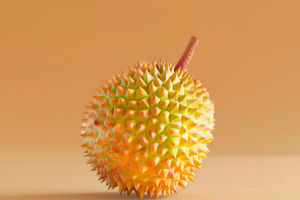Have you ever wondered about the journey these tropical delights take from farm to table?
In this article, we will take a behind-the-scenes look at mango harvesting, exploring how they are cultivated, harvested, and transported to markets, all while emphasizing sustainable practices that protect our environment!
1. Cultivating Mangoes: The Basics
The journey of mangoes begins in the orchards where they are cultivated. Mango trees thrive in tropical and subtropical climates, requiring plenty of sunshine, well-drained soil, and a warm climate. Farmers typically plant mango trees in well-spaced rows to ensure good air circulation and sunlight penetration.
2. The Harvesting Process
Mangoes typically take several months to mature after flowering. Farmers must monitor the trees closely to determine the optimal harvest time, which varies depending on the mango variety. Harvesters often use a tool called a mango picker, which consists of a long pole with a basket at the end, allowing them to reach high branches without damaging the fruit or the tree.
3. Sustainable Practices in Mango Farming
Sustainability is a critical consideration in mango farming. Many growers are adopting eco-friendly practices to reduce their environmental impact. Some of these practices include:
1. Organic Farming: By using organic fertilizers and pest control methods, farmers can produce mangoes without harmful chemicals.
2. Water Conservation: Efficient irrigation systems, such as drip irrigation, help conserve water while ensuring that mango trees receive the moisture they need to thrive.
3. Biodiversity: Some farmers integrate mango cultivation with other crops or native plants, promoting biodiversity and reducing the need for chemical inputs.
4. Waste Management: Many farms have adopted practices to recycle waste materials, such as using mango peels and seeds for compost or animal feed, contributing to a circular economy.
4. Transportation to Markets
After harvesting, the mangoes are transported to local markets and distribution centers. The transportation process is crucial in maintaining the quality of the fruit. Here’s how it typically works:
1. Cooling: To extend shelf life and preserve freshness, harvested mangoes are often placed in cold storage immediately after picking.
2. Packaging: Mangoes are carefully packed into boxes that are specifically designed to protect the fruit during transport. Proper packaging reduces the risk of bruising and spoilage.
3. Transportation Methods: Depending on the distance to the market, mangoes may be transported by truck, rail, or air. Each method has its pros and cons, but all aim to deliver the fruit as quickly and safely as possible.
5. From Market to Table
Once the mangoes reach local markets or grocery stores, they are ready to be enjoyed by consumers. The journey from farm to table can be relatively short, allowing mangoes to retain their freshness and flavor. Consumers can enjoy mangoes in various forms—fresh, dried, or as part of juices and smoothies.
Mango Growing and Harvesting in My Village to Packaging Mango into Mango Factory
Video by Farm Channel
As lykkers enjoy your next mango, take a moment to appreciate the journey it has taken to reach your table. By supporting sustainable farming practices, you contribute to a healthier planet and the continued enjoyment of this delicious fruit for generations to come!


